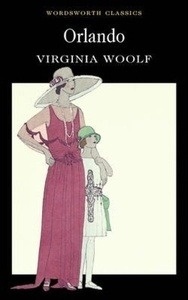Orlando

Editorial Wordsworth Classics
Fecha de edición febrero 1995 · Edición nº 1
Idioma inglés
EAN 9781853262395
192 páginas
Libro
encuadernado en tapa blanda
Resumen del libro
With an Introduction and Notes by Merry M. Pawlowski, Professor and Chair, Department of English, California State University, Bakersfield. Virginia Woolf's Orlando 'The longest and most charming love letter in literature', playfully constructs the figure of Orlando as the fictional embodiment of Woolf's close friend and lover, Vita Sackville-West.
Spanning three centuries, the novel opens as Orlando, a young nobleman in Elizabeth's England, awaits a visit from the Queen and traces his experience with first love as England under James I lies locked in the embrace of the Great Frost. At the midpoint of the novel, Orlando, now an ambassador in Costantinople, awakes to find that he is a woman, and the novel indulges in farce and irony to consider the roles of women in the 18th and 19th centuries. As the novel ends in 1928, a year consonant with full suffrage for women.
Orlando, now a wife and mother, stands poised at the brink of a future that holds new hope and promise for women.
Biografía del autor
Hija del conocido hombre de letras Sir Leslie Stephen, Virginia Woolf nace en Londres el 25 de enero de 1882, y vive, desde su infancia, en un ambiente densamente literario. Al morir su padre, Virginia y su hermana Vanesa dejan el elegante barrio de Kensington y se trasladan al de Bloomsbury, más modesto y algo bohemio, que ha dado nombre al brillante grupo formado alrededor de las hermanas Stephen. En 1912 se casa con Leonard Woolf y juntos dirigen la Hogarth Press. El 28 de marzo de 1941, la genial novelista sucumbe a la grave dolencia mental que la aqueja desde muchos años atrás y se suicida ahogándose en el río Ouse. Además de Las olas (1931), Virginia Woolf fue autora de novelas tan importantes como El cuarto de Jacob (1922), La señora Dalloway (1925), Al faro (1927), Orlando (1928), Los años (1937) y Entre actos (1941).








